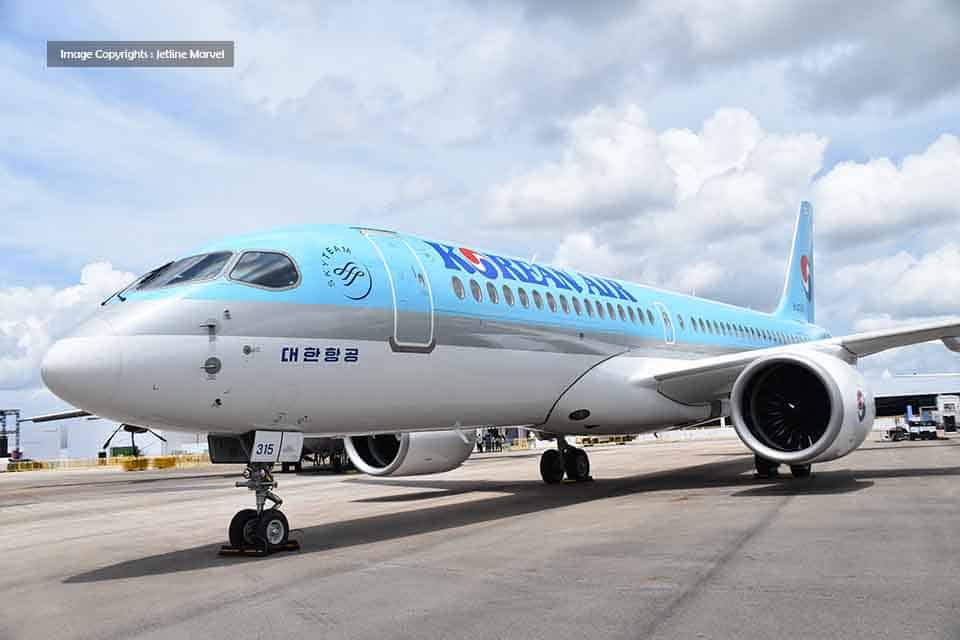Aviation
B737 MAX 8 Cabin System Malfunctions: Passengers Experience Nosebleeds and Ear Pain

A Boeing 737 MAX 8 jet operated by Korean Air, bound for Taichung, Taiwan, encountered a distressing incident when its cabin pressurization system malfunctioned shortly after takeoff.
Reports from passengers described a sudden onset of problems, prompting the aircraft to promptly return to Incheon International Airport in Seoul, South Korea. As the malfunction unfolded, the aircraft was compelled to rapidly descend from its cruising altitude of over 30,000 feet to approximately 9,000 feet.
2 passengers suffered nosebleeds; 15 reported ear pain
This sudden change in altitude caused discomfort among passengers, with at least two individuals suffering from nosebleeds and 15 others experiencing ear pain and hyperventilation. Emergency protocols were swiftly activated, including the deployment of oxygen masks as the aircraft descended.
Passengers recounted harrowing moments during the incident, describing how the aircraft unexpectedly lowered altitude during meal service, leading to cries from children and widespread discomfort among travelers. Many reported sensations of ear pain, dizziness, and the disorienting effects of sudden cabin pressure changes.
Despite the chaotic situation, the cabin crew was commended for their prompt response, assisting passengers with oxygen masks and swiftly securing the cabin for landing. The pilots successfully landed the aircraft back at Incheon International Airport, ensuring the safety of all on board by 7:38 p.m. local time.
No serious injuries reported despite the alarming incident
Following the incident, Korean Air took immediate steps to mitigate disruption, arranging for a different aircraft to complete the flight to Taichung the following morning. The airline issued an apology to affected passengers and initiated an investigation into the root cause of the malfunction.
Videos shared by Taiwanese passengers captured the tense atmosphere inside the cabin during the incident, highlighting the urgency and gravity of the situation faced by those on board.

Aviation
Air India to Implement Fatigue Report Verification for Flight Crew

Air India is set to implement a new internal policy starting October 1, aimed at verifying the authenticity of fatigue reports submitted by its flight crew. Reports deemed “unsubstantiated” will be reclassified as “sick leave.”
This initiative is part of a broader set of measures designed to boost operational efficiencies in preparation for Air India‘s merger with Vistara. While officials promote the policy as a step towards improved operational integrity, it has sparked significant concern among pilots.
Southwest Airlines Unveils 3-Year ‘Southwest. Even Better.’ Plan for Growth
Many feel that this approach could deter them from reporting genuine fatigue, which is crucial for maintaining flight safety. One pilot expressed, “This policy needs to be reconsidered. Rather than questioning whether a pilot is experiencing ‘fatigue’ or is ‘sick,’ the airline should extend trust to its pilots in all areas.”
Another echoed these sentiments, stating, “We may hesitate to report ‘fatigue’ if it risks being classified as ‘sick leave.’” The Directorate General of Civil Aviation (DGCA) defines fatigue reports as formal documents filed by flight crew members to indicate excessive tiredness that could impair their performance.
Top 10 Most Connected Low-Cost Carrier Airports in the World
In response to concerns, air india refurbishment clarified that the new Fatigue Protocol is in line with global best practices and is intended as a non-punitive measure. To safeguard crew well-being, the airline plans to utilize scientific tools such as Jeppesen and the Boeing Alertness Model (BAM).
Under the new policy, if a crew member reports fatigue within 12 hours of their scheduled duty, the report will be recorded as “Fatigue,” triggering immediate escalation to scheduling management and flight safety departments. This move aims to prioritize crew welfare while addressing operational demands.
Additionally, recent regulations have increased weekly rest periods for flight crews from 36 to 48 hours, a change pilots have welcomed, though airlines have expressed concerns about the feasibility of meeting these new standards. The DGCA had initially set deadlines for compliance but reversed its decision after airlines raised apprehensions about potential reductions in flight capacity.
-

 Aviation1 month ago
Aviation1 month agoNew EU Carry-On Rules Begin September 2024: What to Expect
-

 Aviation3 weeks ago
Aviation3 weeks agoBoeing confirms 797: A New Era for Mid-Size Aircraft
-

 Airlines2 months ago
Airlines2 months agoAir India Rolls Out A350s for Delhi-New York JFK and Newark Routes
-

 Aviation2 weeks ago
Aviation2 weeks agoLockheed and Tata Team Up to Build C-130J MRO Facility in India
-

 Tech3 weeks ago
Tech3 weeks agoChina Developing Jet to Travel Anywhere in Two Hours
-

 Aviation2 months ago
Aviation2 months agoMeet WindRunner: The World’s Heaviest and Largest Aircraft Ever Built
-

 Airport2 months ago
Airport2 months agoTop 10 Largest Airports in the World by Size
-

 Aviation2 months ago
Aviation2 months agoComac C919 Moves Closer to Securing EU Certification with EASA







